For the kind of person who makes an effort to rise before the sun to get an uninterrupted run on their favorite road, the V6-powered Lotus Emira flirts with perfection. As the sports car scene grows oversaturated with powerful giants masking as featherweights, the small Lotus reads like the product of a bygone era. A time when driver engagement, not boisterous performance stats, defined what a sports car should be.
This isn't a recent development. This philosophy has shaped Lotus since its inception. Nevertheless, the British brand's current creations and, ultimately, its identity are undergoing transformation.
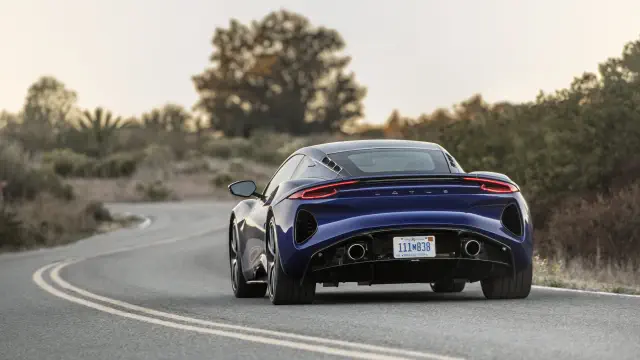
View pictures in App save up to 80% data.
I haven’t had the chance to test drive the Eletre SUV or the Emeya sedan, as they are not currently offered for sale in the US. Therefore, I can't jump onto a virtual podium and proclaim these electric vehicles as the demise of Lotus before dramatically swooning and being escorted away. However, considering the differences in powertrain options, design, and overall size, it’s clear even without firsthand experience that these new models are steering the brand into a completely different path—one that contrasts sharply with its traditional heritage.
At this crucial juncture, the new Lotus Emira 2.0T is starting to make its debut in showrooms nationwide. Unlike the electric vehicles, which many enthusiasts view as a betrayal of tradition, this mid-engine four-cylinder sports car enters the scene as if nothing has changed. It's truly lightweight, visually stunning, and surprisingly functional.
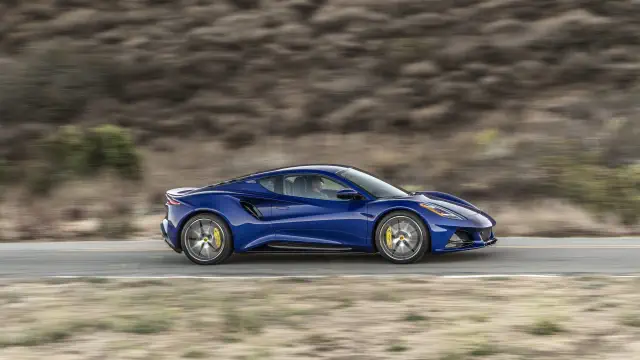
View pictures in App save up to 80% data.
A decade ago, the concept of a Lotus that was exclusively automatic would have sparked outrage among enthusiasts. However, with the rise of electrification, even the most fervent critics are beginning to reconsider their stance. This shift in perspective is beneficial, especially since the 2.0T isn't merely the new base model Emira; for most casual Lotus fans, it stands out as the ideal choice.
Despite the unwavering dedication of loyal fans, the sales figures from the past twenty years indicate that solely appealing to those who revere Colin Chapman quotes over religious texts is not a sustainable strategy for a car brand. Although the V6-powered Evora introduced an automatic transmission to attract a wider audience, it utilized a torque converter sourced from Toyota, which hardly competes with the impressive PDK of the Porsche Cayman. The new V6 Emira adopts a comparable approach and faces similar challenges.
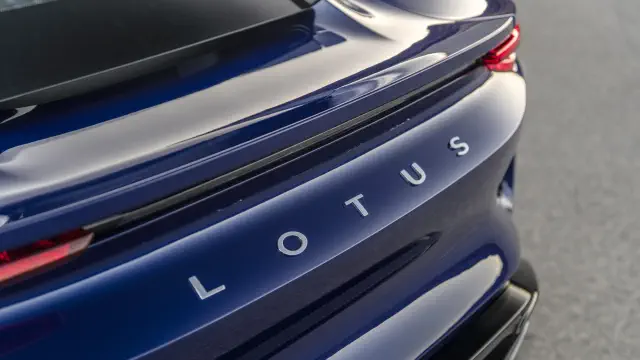
View pictures in App save up to 80% data.
On the other hand, the Lotus Emira 2.0T offers a chance to captivate prospective customers with a vehicle that exudes personality while being designed for seamless gear transitions. Lotus accomplishes this by shifting from sourcing parts from Toyota to tapping into Mercedes-AMG’s inventory. After a thorough selection process, it selects the turbocharged 2.0-liter inline-four engine from AMG’s 35 and 45 models, along with its dual-clutch automatic transmission, and integrates them into the rear of the Emira.
The results are immediately promising. Despite incorporating a heavier transmission, the four-banger’s smaller footprint is lighter than the V6 combo. Thus, the entry-level Emira’s 3,187-pound curb weight clocks in at just under the V6 car’s 3,212 lb figure. Yet it still produces 360 horsepower and 317 pound-feet of torque, not far off the V6 car’s 400 hp and 310 lb-ft output. That’s admittedly not a ton considering this car’s $99,900 base price, but I’ll come back to that.

View pictures in App save up to 80% data.
When you start driving the Lotus Emira 2.0T, you immediately notice that it delivers a distinctly different experience compared to the V6 model, particularly in terms of power delivery. The peak torque kicks in at 3,000 rpm, which is lower on the tachometer than its counterpart, giving it a noticeably quicker feel during low-rev acceleration. The quick-shifting dual-clutch transmission enhances the sensation, making the seemingly modest torque rating feel impressively underestimated. The Emira 2.0T launches off the line with enthusiasm, whereas its sibling requires more time to gain momentum.
At the same time, its power output remains relatively consistent as it approaches the 7,200-rpm redline, only beginning to wane as you reach the upper limit. This is an impressive 400 rpm more than the V6 can achieve. Surprisingly, if you’re seeking the most high-revving variant of this sports car, the Lotus Emira 2.0T is the model to choose.
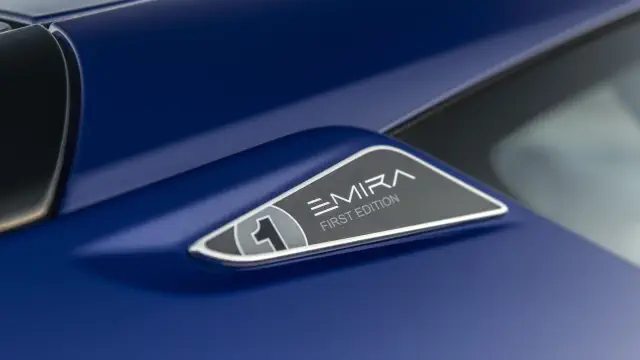
View pictures in App save up to 80% data.
While this inline-four engine delivers impressive power, its sound remains quite typical. Although there are some turbocharged sounds that enhance the auditory experience, it still produces a relatively subdued tone, with just a faint trace of buzziness. On the other hand, the 3.5-liter V6 isn't exactly known for its vocal prowess either. Ultimately, regardless of which engine you opt for, the focus is on performance, agility, and responsiveness rather than the auditory experience. In this regard, the Porsche 718 Cayman GTS 4.0 outshines the athletic Lotus.
However, regardless of which engine powers it, one of the Lotus’ greatest strengths is that it isn’t a Porsche. As good as the Cayman is, it’s become fairly ubiquitous, and the Emira offers a compelling counterargument for those who want something different. There’s a strong case to be made that the Lotus is the better looker of the two. It retains supercar proportions and simple yet elegant styling offered in a downsized package. There’s a hint of “Honey, I Shrunk the Ferrari” to this car, and its looks allow it to appeal to a broader audience than the firmly enthusiast-oriented Elise and Evora.
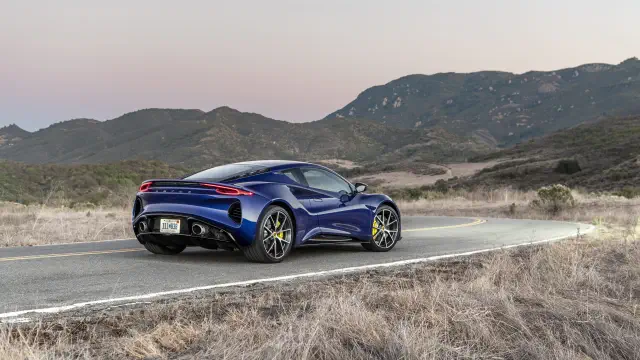
View pictures in App save up to 80% data.
Its aesthetic appeal captivates onlookers, while its functionality keeps them engaged. You might assume that the Lotus Emira 2.0T is not only fast but also nimble, responsive on winding roads, and offers nearly flawless handling—after all, it’s a Lotus. However, what may surprise you is how this new powertrain expands its versatility. The V6 Emira with a manual transmission isn’t particularly difficult to handle, yet it doesn’t serve as an ideal all-around vehicle for those navigating congested urban environments. The 2.0T, on the other hand, does.
AMG’s DCT is not only quick on twisting roads but also smooth in urban settings. When you simply need to reach your destination, you can shift it into drive and carry on with your day without any hassle. The cabin remains serene at lower RPMs, and the interior quality of the Emira is significantly superior to that of the Evora. The First Edition model I’m testing offers excellent damping, providing a comfortable ride even on bumpy surfaces. There’s plenty of storage available, with a generously sized trunk and a shelf behind the seats. This vehicle is well-suited for weekend escapes or road trips, all while maintaining a compact size.
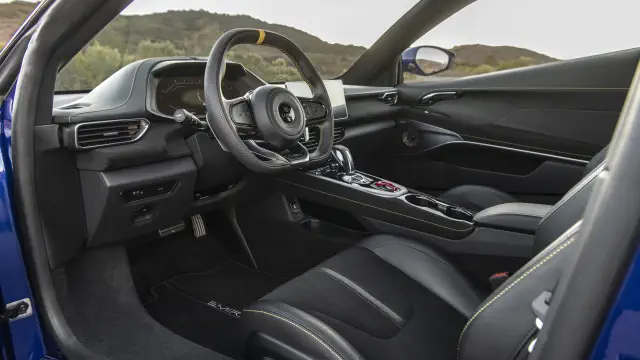
View pictures in App save up to 80% data.
The seats are equally impressive. They offer a high level of comfort, and adjusting to the ideal seating position is straightforward, thanks to the perfect alignment of the steering wheel and pedals. Additionally, the cabin provides outstanding visibility, making it an inviting option for anyone interested in experiencing a mid-engined car for the first time.
Nonetheless, there are a few idiosyncrasies to note. Using the gear selector demands thoughtful attention, as it necessitates a double input due to its default central position. Additionally, the shift paddles are quite small and feel somewhat delicate, which can be surprising for a component that you interact with so frequently.
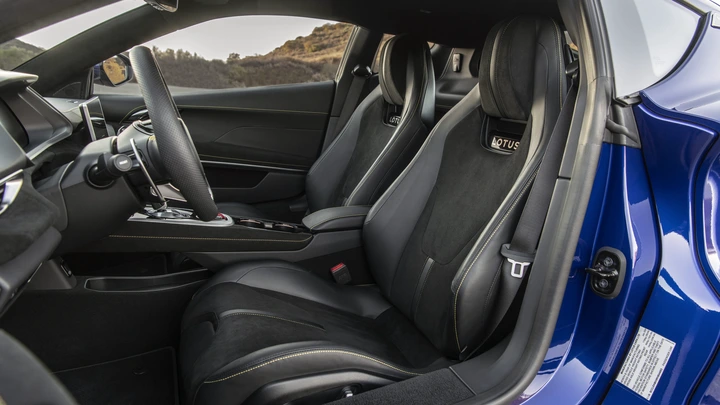
View pictures in App save up to 80% data.
The Lotus Emira 2.0T is an aesthetically stunning mid-engine sports car that remains thrilling to drive, even with its automatic transmission. Nonetheless, one major concern looms large: its price tag.
A 2024 Lotus Emira 2.0T like this one starts at $99,900, not including destination fees. A comparable 2024 Porsche 718 Cayman GTS 4.0 starts at $95,200, not accounting fees, while the current 2025 model comes in at $99,700 following a recent price increase. Considering that the Porsche matches the Lotus from a usability perspective at a similar price point while offering a more compelling flat-six engine, the Emira has strong competition. Spend a little more, $113,795, to start, and you’re in Corvette Z06 territory.
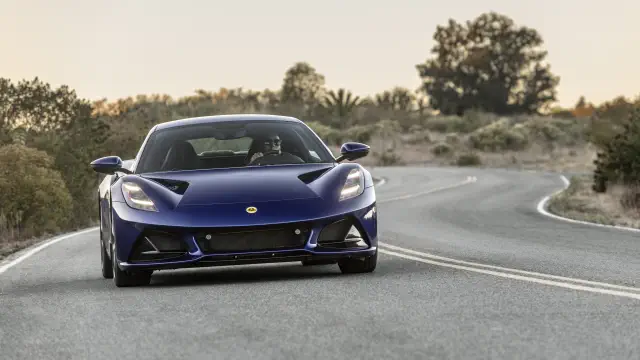
View pictures in App save up to 80% data.
As the British automaker finds its way through this unusual period, where it produces both nimble sports cars and expansive luxury electric vehicles, the Lotus Emira 2.0T seems to resonate more with the brand's heritage than its future direction. In contrast to the Elise, Evora, or even the V6 manual Emira, this model attracts a broader audience beyond just those eager to rise early for a perfect drive. You don’t need ideal circumstances to appreciate it. Its greatest accomplishment lies not just in being an exhilarating sports car, but in being an automatic Lotus that many would prefer over the manual version. It has finally evolved into a genuine all-in-one vehicle solution.